If you travelled so far, I’m sure you want to experience the most famous tourist attraction in Cambodia, and you must be prepared for it. Watching the sunrise at Angkor Wat is an iconic travel experience and you have to start your day certainly very early. (see the picture above)

DAY 2
Our day started early in the morning. Our guide picked us at 5 am, breakfast box was packed by hotel staff. I must say that their service is impeccable. (Don’t come back to your hotel for breakfast, you will end wasting of time, instead get it packed).We weren’t the only ones with this plan; in fact the journey from Siem Reap to Angkor was filled with a steady stream of travellers all hoping to capture a magnificent sunrise over the temples.
After showing the guards our passes, we walked straight to the point from where spectacular sunrise is best viewed and captured; that is on the left side of the water lily pond. You have no idea how many people were stationed there with camera equipment and tripod set up already. The trick is to come as early as possible and get your spot.
That day we were not lucky enough to see the spectacular sunrise as sun decided to play hide and seek with the clouds. Nevertheless the reflection of the architectural jewel at this hour in the pond was super awesome. We could hear the cameras clicking, the selfie-sticks folding up and down, and tons of ‘Woooww’. It was not the background with vibrant colours that we were looking for, but it’s still decent (it’s hard to take a bad photo of Angkor Wat, it’s that photogenic).
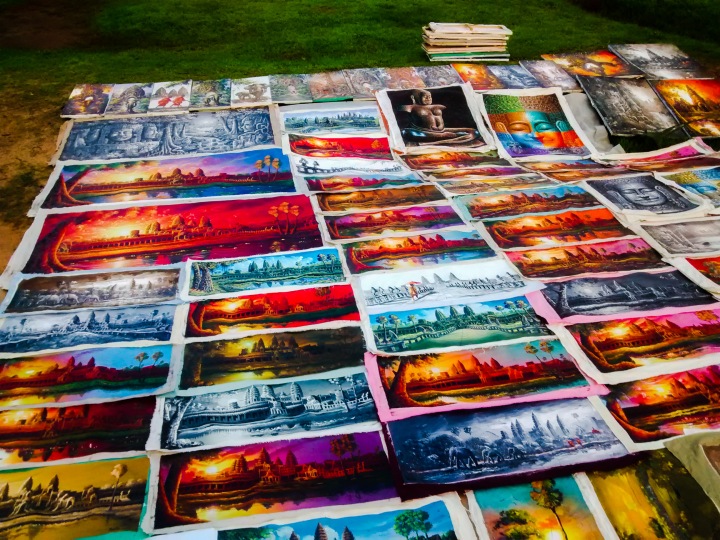
Oh yes, at this spot be prepared to be pestered by local kids and elders to buy all kinds of souvenirs. If you really want to buy something don’t forget to bargain.
The perk to being here for sunrise is that you have plenty of time to explore this first temple before the crowd arrives. Another advantage of visiting the temple in the early morning is that the temperature then is more bearable. We spend a couple hours exploring the inside of the Angkor Wat temple. With its soaring towers and vast colonnades, the temple spans an area of nearly 500 acres. We walk down ancient corridors, hike steep sets of stairs to the upper levels, and examine the ornate carvings.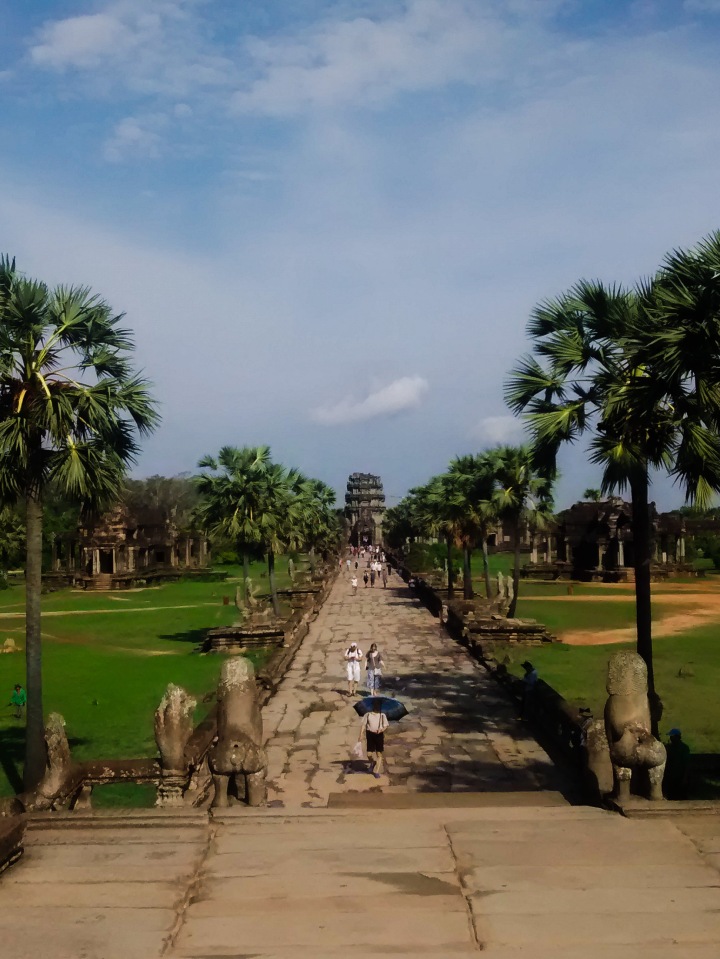

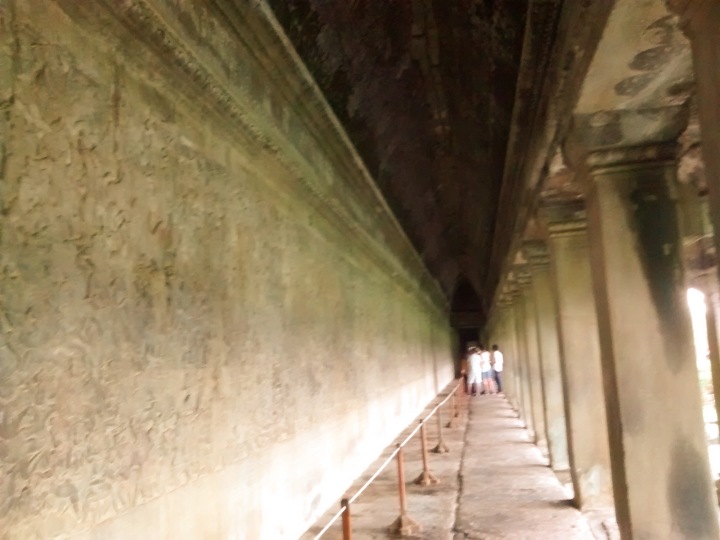
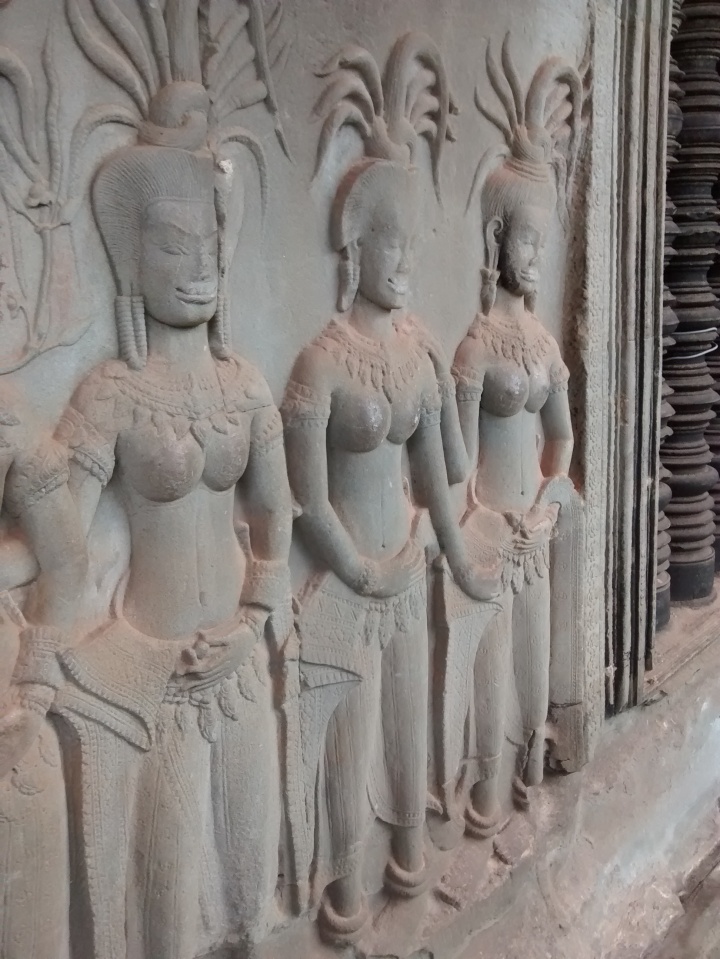
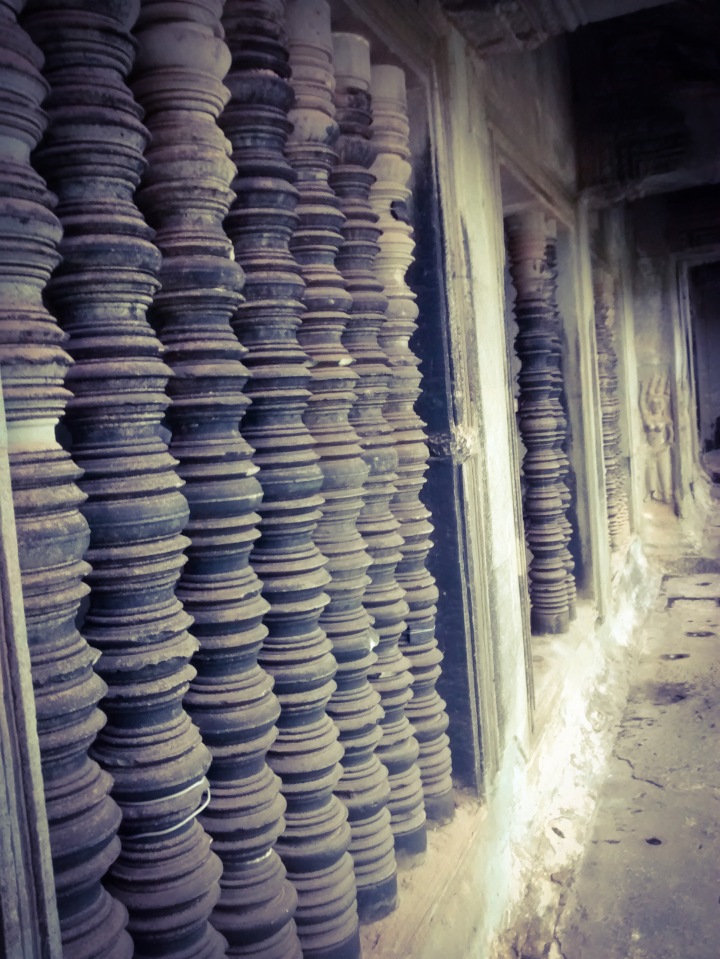
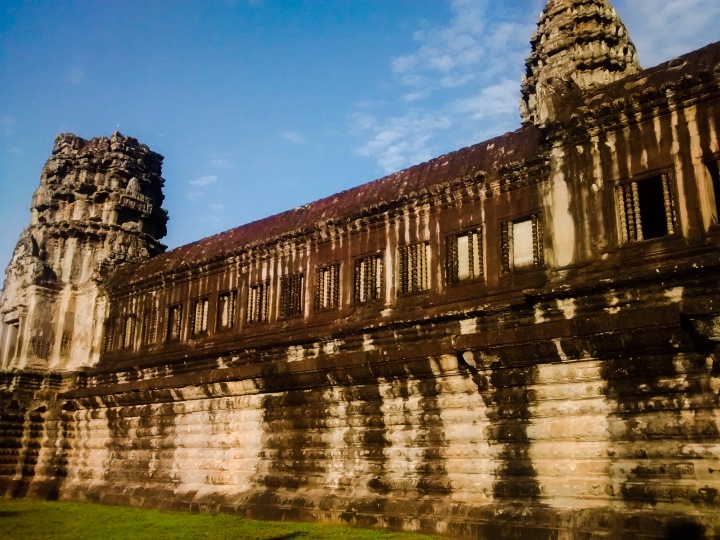
Angkor Wat’s Indian Roots
India’s influence in Cambodia is visible from the architecture of Angkor Wat to written Khmer, which is a derivative of Sanskrit and Pali script. I have read lot about Angkor Wat’s India connection and it was certainly evident that the layout of the temple is based on Hindu ideology. I wonder why the Indian history lessons taught in our schools and colleges depict nothing of this Hindu, Buddhist and ancient Indian influence on this region.
Our guide told us that Angkor Wat temples were dedicated to Lord Vishnu, the abode of the preserver of the universe. Later on the influence was replaced by Buddhism. (Obviously, we knew this bit but he was doing his job).
Temple is the replica of the mythological Mount Meru and its five peaks which was considered as Heaven on earth. See it, to believe it. Mythological characters from the Hindu religion were evident in every pathway, corridor, wall and pillar of the temple in the form of carvings, sculptures and architectural designs. You could simply lose yourself in the intricacies of the bas-relief carvings of the Hindu epics, the Ramayana and Mahabharata, layering the walls of the stone structure. Despite centuries of wear and tear and invasions from looters and tourists, the bas-reliefs have well stood through the test of time and remain beautiful even today.
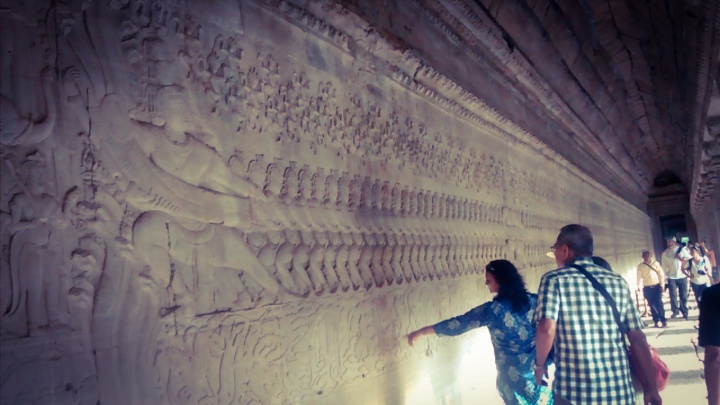
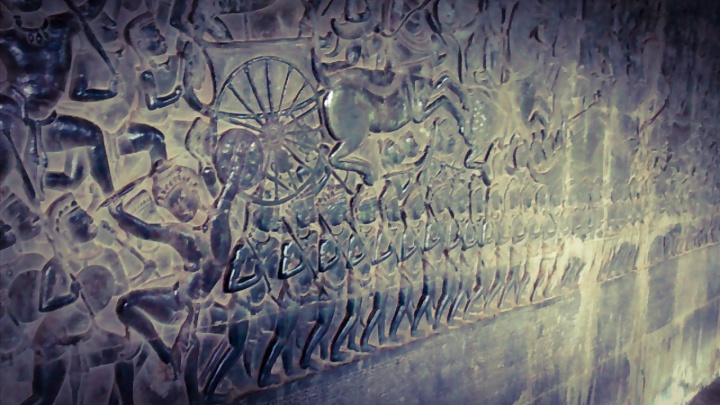
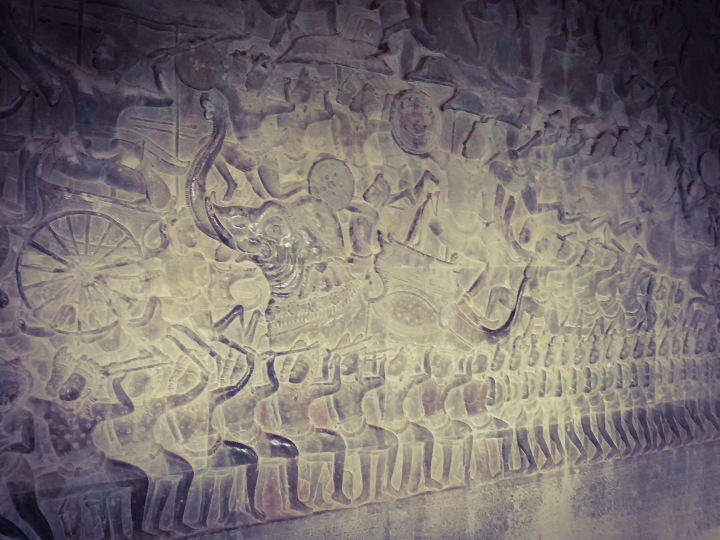
Our guide, knowing we were from India ended up clarifying his knowledge about Ramayana and Mahabharata from us while we were exploring the temple premises. This bit made my parents and uncle and aunt excited. While they were amazed to see the Indian influence on the wall, they were over enthusiastic to share their knowledge about Hindu epics with the guide. And I was wondering who is the guide- they or Mr Bana (our official guide). 🙂
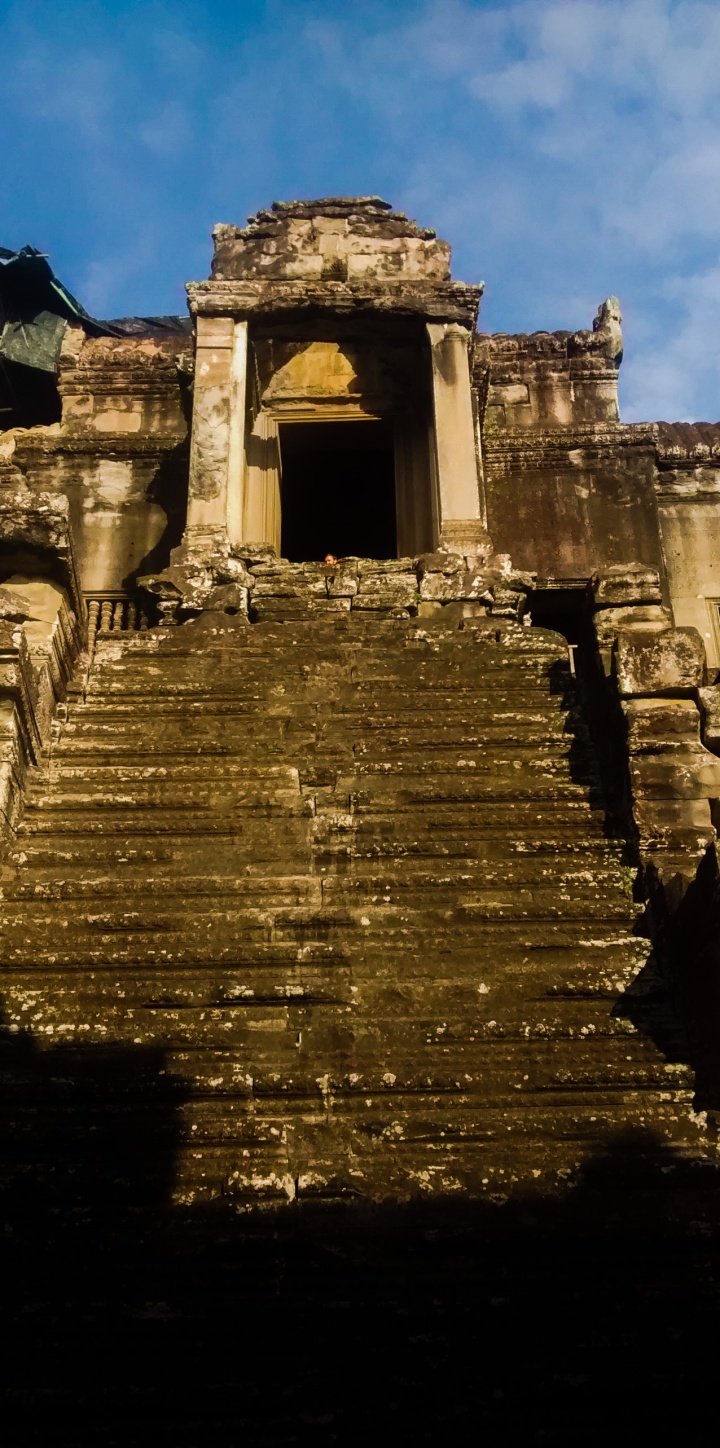
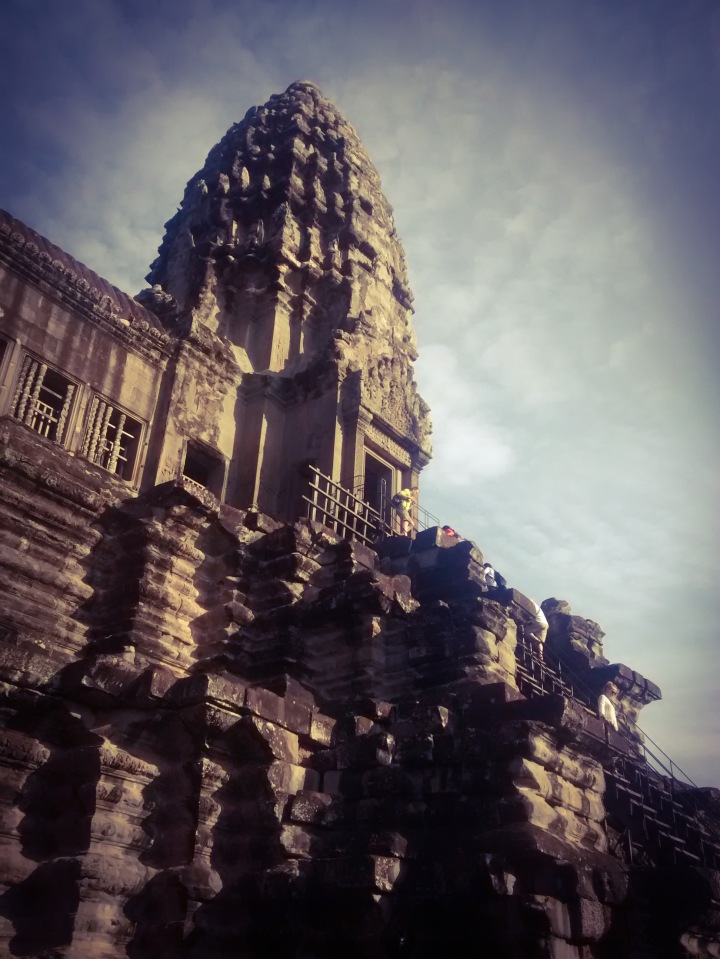
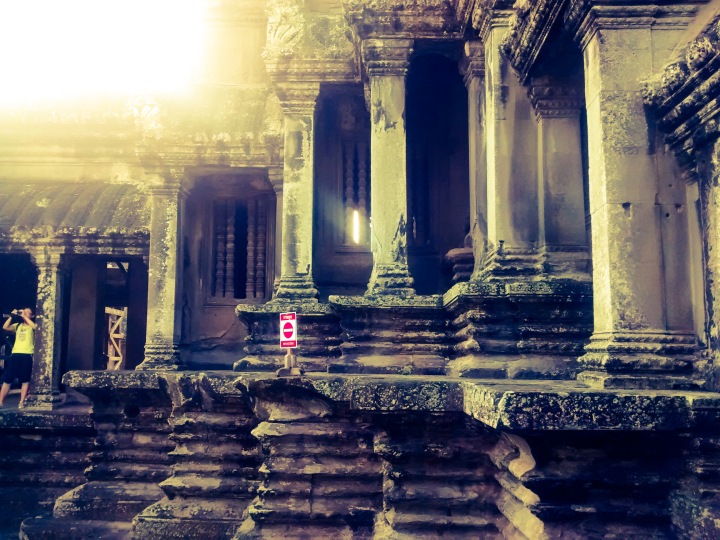
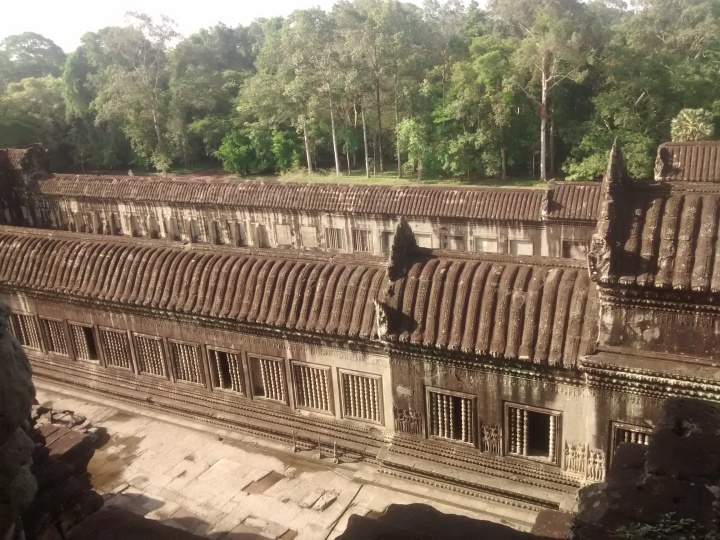
After a couple of hours of exploring the temple premises, we reached the sanctum sanctorum of the temple which tested our climbing and balancing ability using an improvised steep wooden staircase to the top floor which housed a huge stone monolith of Lord Vishnu though depicted in the form of Lord Buddha. At one time only 100 people are allowed on the top floor. You get panoramic view of the surrounding areas from the top, which makes all the climbing worth it.
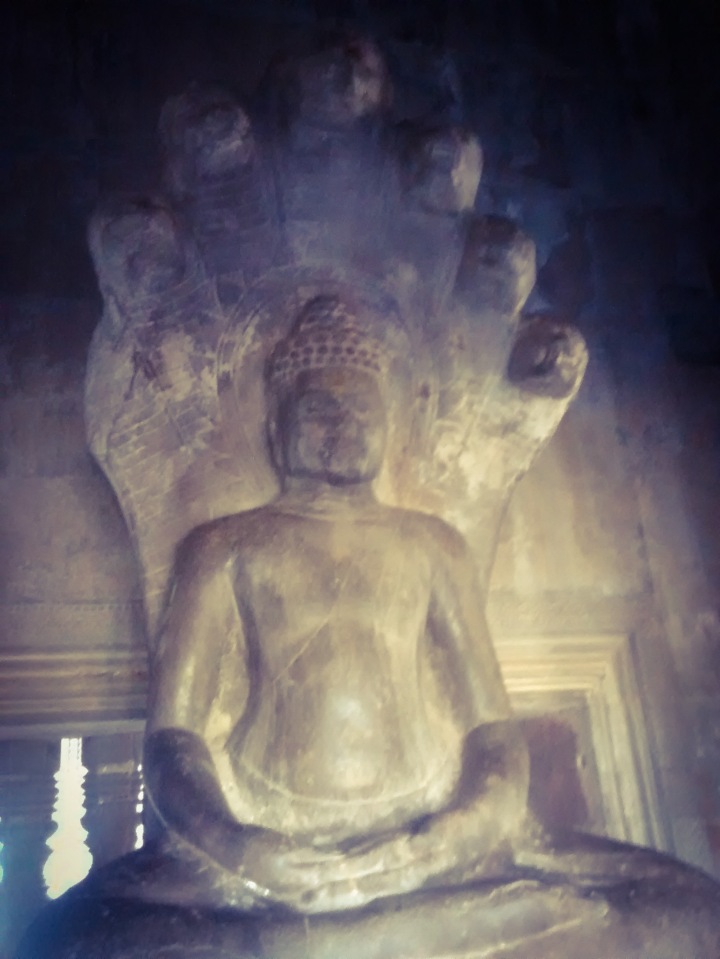
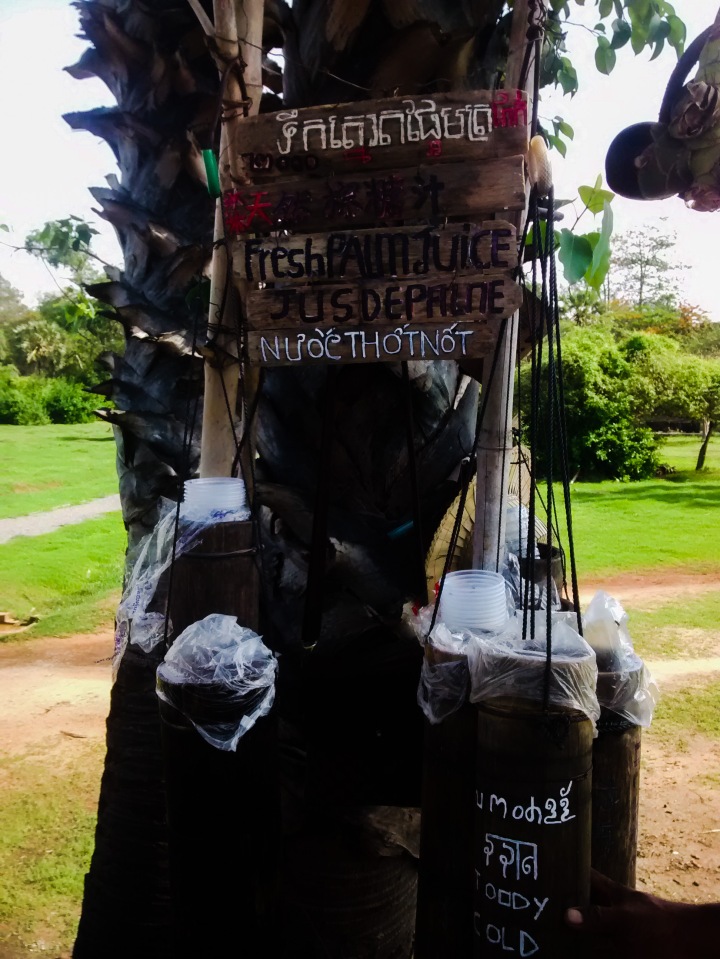
Angkor Thom and Bayon
After tour of majestic Angkor Wat, our next stop was Angkor Thom, another architectural beauty reflected by the entire approach road to the actual gateway flanked by huge stone statues of the mythological characters of Asuras and Devas. At the centre of this Angkor Thom lies the Bayon Temple built during the early 13th Century AD by the Buddhist king Jayavarman VII.
This temple is best known for the stone smiling faces which look out in all four directions. From afar, it looks just like another massive pile of ruins. But as I drew closer and the faces started appearing amidst the stone towers thought to represent King Jayavarman VII. To reach the upper level, we had to climb up small steep staircases. At the top, you can get up close and personal with the enormous faces.
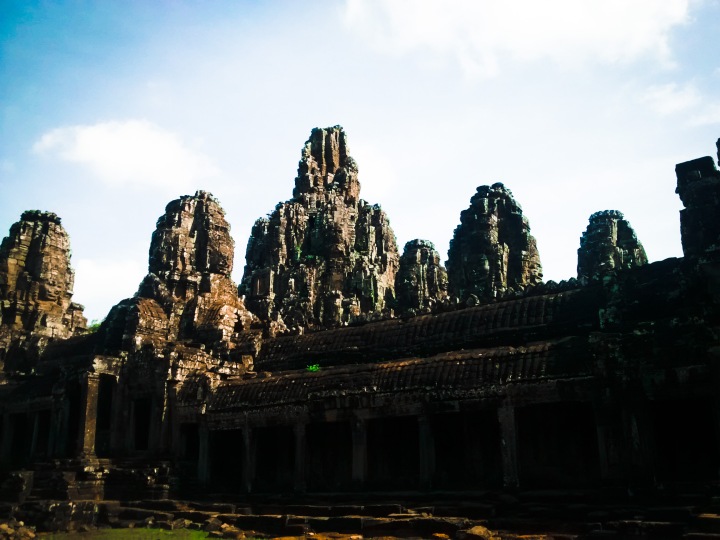
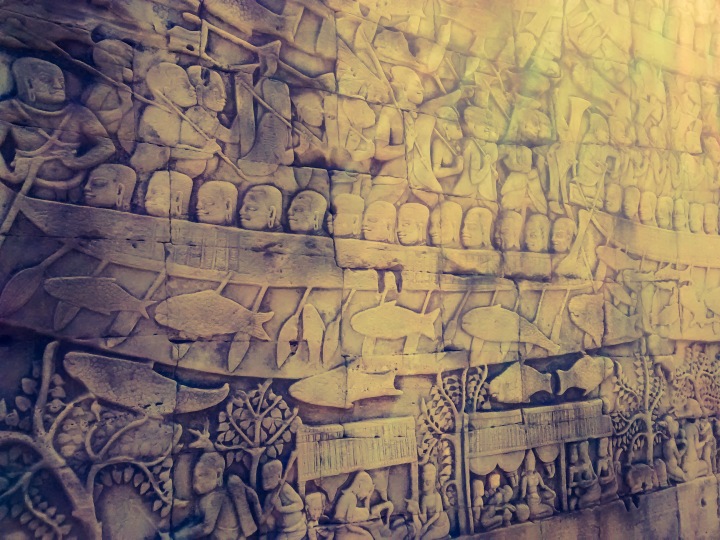
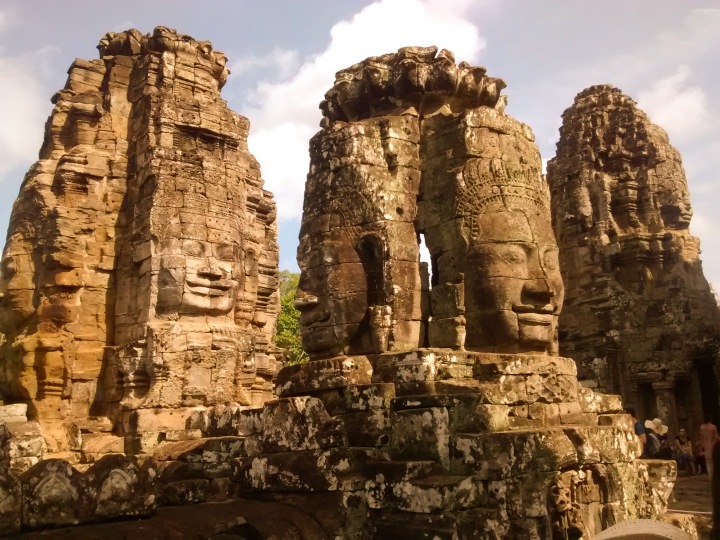
By the time we were our out of Bayon, temple fatigue had hit us but we were still determined to head towards our next stop before we took our afternoon flight to Bangkok.
Ta Prohm : embraced by the jungle
Moving on, after a short drive we reached Ta Prohm, Temples of trees. This was my favourite of all the temples we visited. It is one of the most photographed sites in Cambodia’s temple region.
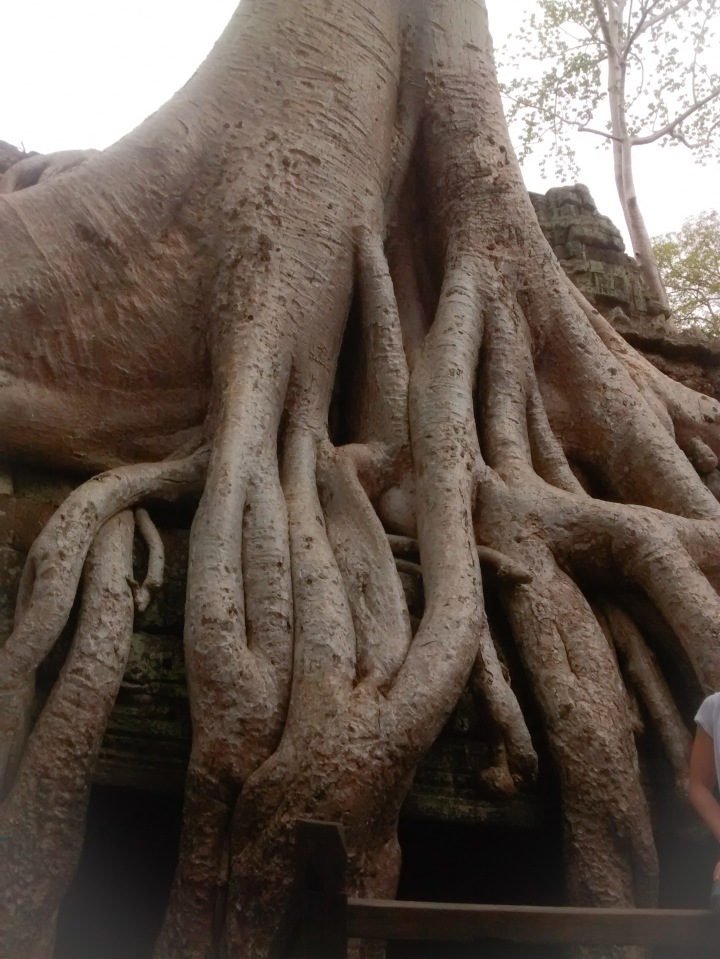
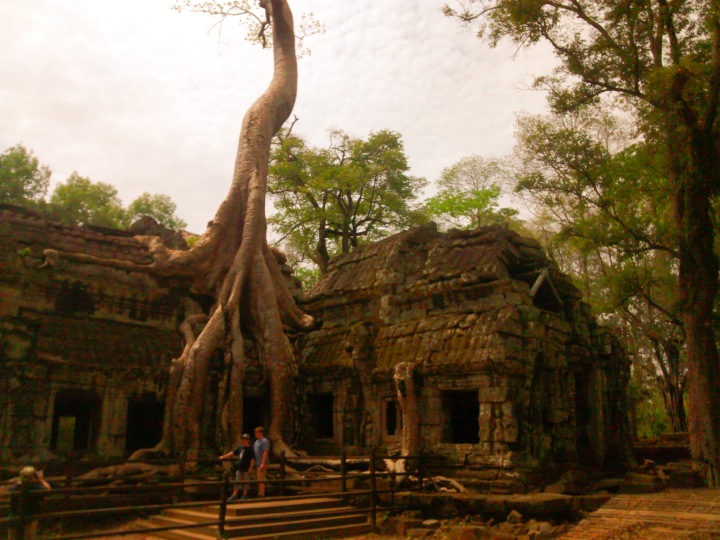
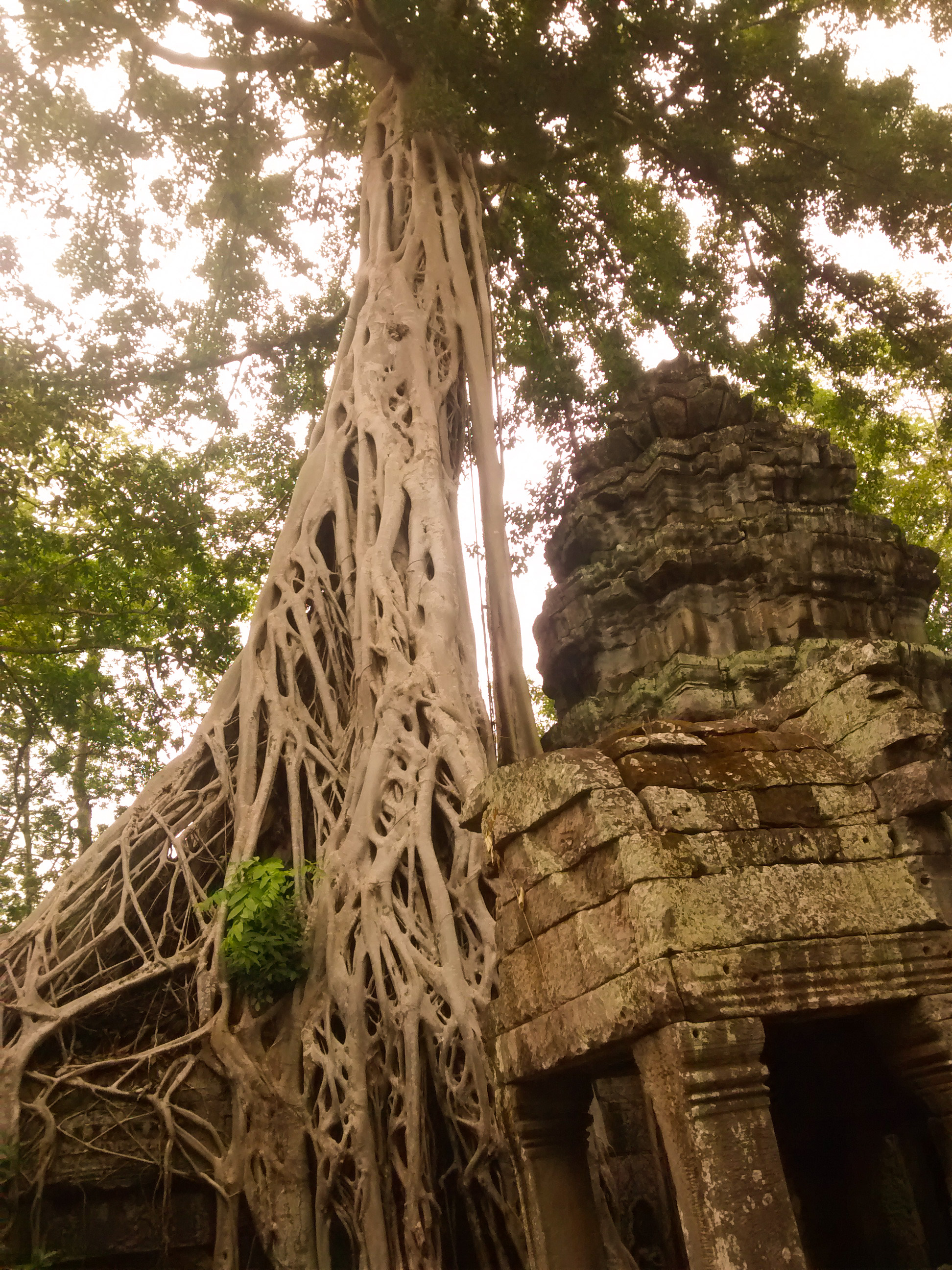
Our guide informed us that it was a Buddhist temple dedicated to the mother of Jayavarman VII.Archaeologists have intentionally left it in an advanced state of ruin. Piles of crumbled stone fill the temple’s courtyards, vestibules, and walking paths. Fig and spunk trees puncture the roofs of Ta Phrom’s towers. Their mighty roots pry apart the temple’s building blocks, while also appearing to hold them in place. It should be high on the hit list of every visitor.
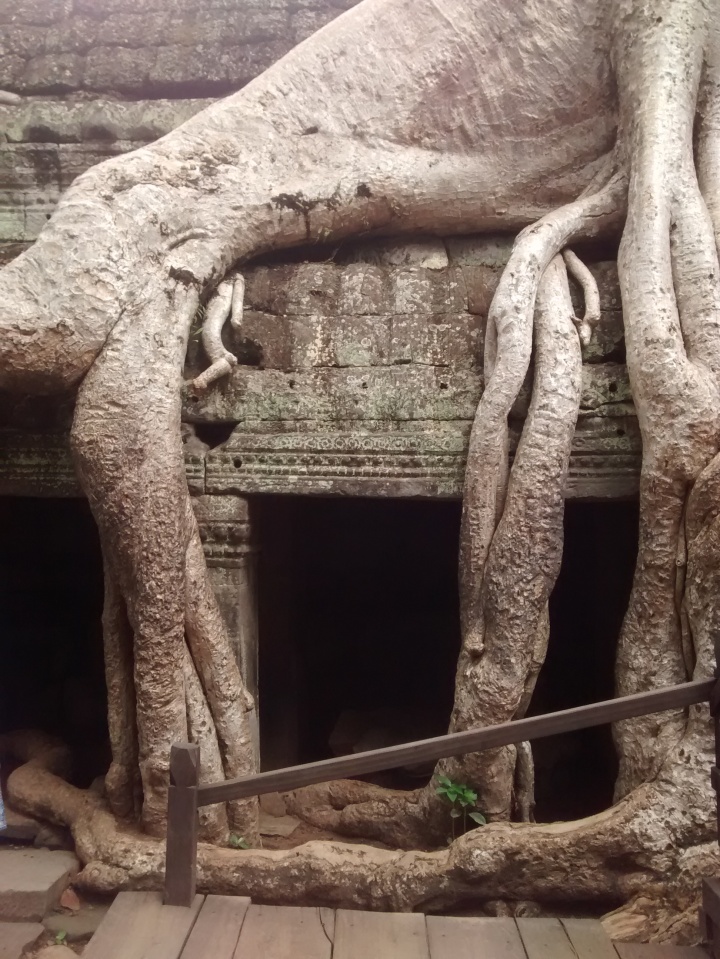
One of my favorite things about this place was how they’d let you wander and explore the ruins despite the crumbling nature of the infrastructure. But if you want to take photographs, be patient. Unfortunately, we got here just as all the tour groups were also arriving. I waited for quite a while to get a clear shot without people in the way.

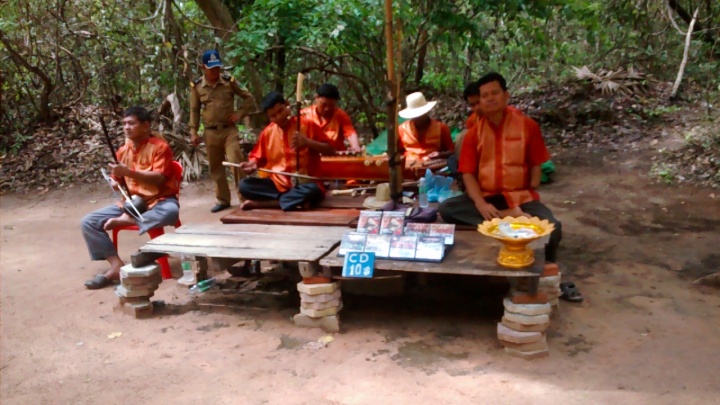
While we were in hurry to finish the tour of temple and get back to the hotel and check out, we could not ignore landmine survivors’ traditional Khmer band in the shade along the boulevard leading to Ta Prohm. All destitute — amputees, blind and scarred, play tentative and mournful melody, to earn enough to support their family.
With that, we left the ruins of Angkor and headed back to hotel to check out. It is an experience of a lifetime and as Angkor Wat’s popularity is on the rise maybe you should go there before it is too late. Sooner or later I think there will be too many tourist and they will eventually have to protect these ancient monuments in various ways.

I guarantee you will be enthralled with everything else in the vicinity. Happy exploring!

Very meticulously observed and beautifully written. I travelled through your words and had a glimpse of mystical Angkor. I loved both parts and the tips are very handy if I am planning to visit Cambodia. Thanks for the visual treat the photos are well composed. Keep rocking.
LikeLike
Hey, you have narrated them so nicely! Cool
LikeLike
Thanks…😃..just a beginning.long way to go
LikeLike
After having thus much similarity I wander why in our school and college’s History subject we were never taught any lesson about Cambodian History and culture. Thanks to Manaswini, you teach us (particularly me) a new history lesson.
LikeLike